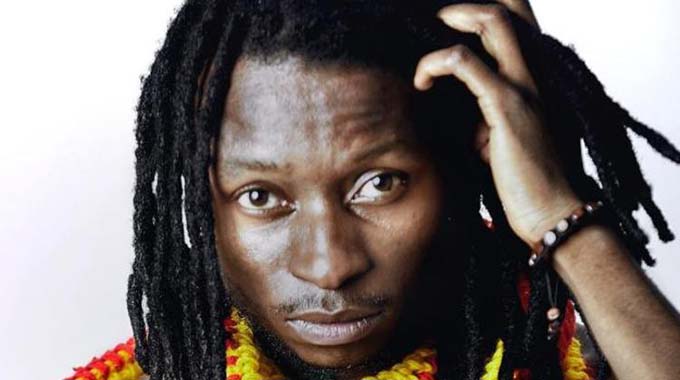Chibondo: Rhodesia’s own Golgotha

Isdore Guvamombe Assistant Editor
The silence as one arrives at Chibondo is eerie and profound.
Only chirping birds that intermittently somersault, albeit, effortlessly from one tree branch to another or from one grass tuft to another, give a sign of life.
Distant clanging cattle bells give another sign of human existence, the resettled farmers. Otherwise it is quiet. Loud silence! The silence there speaks a lot.
The dearth of other sounds sends a chill down the spine. There, the dead speak to you from their graves, before you even know it. You feel it.
A secondary forest of stunted indigenous bush shrubbery and overgrown tinder dry grass hides an array of disused mine shafts.
The dim red sodden soils speak the language of unparalleled fertility and mineral richness.
Not only do the environs provoke an adrenaline rush to the visitor, but it does tingle the brain and the inner self.
It communicates a message understood by the body without the spoken word. Here the bowels of mother earth are pregnant with bodies of callous murders that epitomise Rhodesia.
A pregnancy from the rape of human rights! Rape of black life. Murder of blacks.
In the shafts are horror stories, for long overshadowed by other national events, yet so important and critical to the Independence of Zimbabwe.
In the shafts lie interred the remains of thousands of freedom fighters and civilians, butchered, poisoned, asphyxiated or killed by the Rhodesians during the liberation struggle.
The killing methods were mainly brutal and unorthodox.
Here lie the uncounted and unaccounted for fallen heroes of our liberation struggle and the uncounted and unaccounted for civilians caught in the intricate dragnet of Rhodesian secret services.
Here, more than 2 000 bodies were exhumed from one of the six shafts three years ago, where freedom fighters were buried dead or alive, before the shafts were sealed off and hidden from the eyes of many. More remains still lie in the shafts.
Undertakers met sitting skeletons, some with shrivelled skin supporting their bony frames. They met skeletons of mothers buried with babies strapped on their backs. Here they came across bodies mummified in the airless tunnel. They met blown off torsos. They came across the remains of people whose hands and legs were tied together with barbed wire.
The remains of people whose skulls bore gunshot holes. They came across a scullery of bones and skulls, clothes, dark fatigue jeans, and Chinese tenderfoot Super-pro, and many others. Women’s earrings!
These are gory sites.
The exhumation of the bodies has seen corpses in various postures. Wearing different clothes and shoes.
During exhumation, Chibondo became strewn with skeletons, tufts of hair, sodden and tattered garments, and all manner of deathly paraphernalia, unaccounted for bones enough to shake the world. Everything writes horror on the mind. After the exhumation, with the aid of excavators, over 2 000 bodies from one of the shafts and with five more shafts yet to be ripped open, Chibondo exudes an aura of the brutal killings of blacks by the Rhodesian Selous Scouts.
To date, it is estimated that the remaining five shafts could hold as many as 10 000 people.
Chibondo was a farm in Rhodesia, 32km west of Mt Darwin, where the Smith regime chose to secretly bury captured freedom fighters and civilians, away from the eye of the international community.
Chibondo, situated at the heart of Matepatepa Commercial Farming area, was a preserve of white Rhodesian farmers and was accessible from Bindura as well as from Mt Darwin.
To the east is Chiweshe Communal lands, then tribal trust lands to the east, north is Mt Darwin and to the north east is Centenary.
Centenary is a spitting distance away and that is where the white farmers first learnt about the struggle at Altena Farm.
Chibondo was, therefore, strategically positioned at the heart of white supremacist brutality and some of the people killed were farm workers who had seen a lot of the brutality and were killed to conceal evidence.
Some of the people killed were villagers suspected to have been freedom fighters or to be war collaborators.
These areas that surrounded Chibondo, provided a fertile catchment area for Rhodesians since freedom fighters and villagers cohabited. They rounded up people from villages, killed and dumped them in the mine shaft for taking good care of liberation fighters.
Some were buried alive. The dumpings were mainly done in the stealth of the night, far away from the international eyes.
Among those buried there were also liberation fighters caught in the war in Guruve, Centenary, Mazowe, Rushinga and Mt Darwin itself. What baffles the mind today is that some members of the Rhodesian secret service are in opposition politics, enjoying the fruits of our Independence, yet those who fought for it lie interred in the shafts they were condemned to by the same.
The same die-hard Rhodies today say they want to teach us human rights. Had it not been for gold panners, the remains of fallen heroes could have been kept a secret forever and ever amen. Former farm workers only started owning up after panners bumped into the human remains. Now former farm workers testify to seeing huge army trucks, notoriously known then as Pumas, offloading the dead and the living, alike, between 1973 and 1979. Many whites learnt to shoot at people, which they called “real targets”, there.
They even taught their teenage children to shoot “guerrillas”.
They were no doubt painful deaths.
“Here, African victims of Zimbabwe’s war of liberation were killed in huge groups or buried alive in those groups.
Others were put before the firing squad. Others had grenades detonated in their mouths. The whites also brought their children to learn to shoot.
“An old man who worked for the whites told stories of teenage white boys being taught to shoot at real targets, living people. They would laugh and enjoy their game. Here killing became a game.
In one such incident, a man is said to have been ordered to run away, and five boys were ordered to shoot at him, as practice.
“His bullet-riddled body was the last to be put in one of the shafts and they even laughed as they shot at him. They captured people from Zambezi Valley, from all over Mashonaland Central, killed them and buried them in mass graves.
“People with missing relatives should just come here, but the problem could be identifying them.
“Some were buried alive. They were made to suffocate as the shafts were closed both ends.
They even poured acid on some of their victims. If any worker said it, he would soon be among the dead. That is what we were told by some former workers,’’ said Kasaga Chokururama.
Mrs Elizabeth Deke said through the exhumations, they were able to rebury their aunt, solving a wartime puzzle.
“She had gone to war and disappeared. It’s a good exercise because many people will end up identifying their long-lost relatives,’’ she said.
There is no doubt that Chibondo accounts for thousands of people who went missing during the liberation struggle. The gallant sons and daughters who met their deaths at the hands of brutal white supremacists.
Unfortunately, the exhumation of the remaining bodies was stalled by a legal challenge in the High Court in Bulawayo.
As if that was not enough, MDC-T leader Morgan Tsvangirai declared that it was disrespectful for anyone to exhume the bodies, yet the idea is to give the fallen heroes a respectful burial.
Why silence the bones at Chibondo?
This was a nightmare of our lives in Rhodesia which we cannot run away from. By merely discovering these remains, it is a nightmare of our time, which we need to solve. We cannot run away from it.
The bones of the dead could be knocking against each other in the graves in anger for our failure to give them a respectful burial.
That was the horror of Rhodesia. Chibondo.










Comments